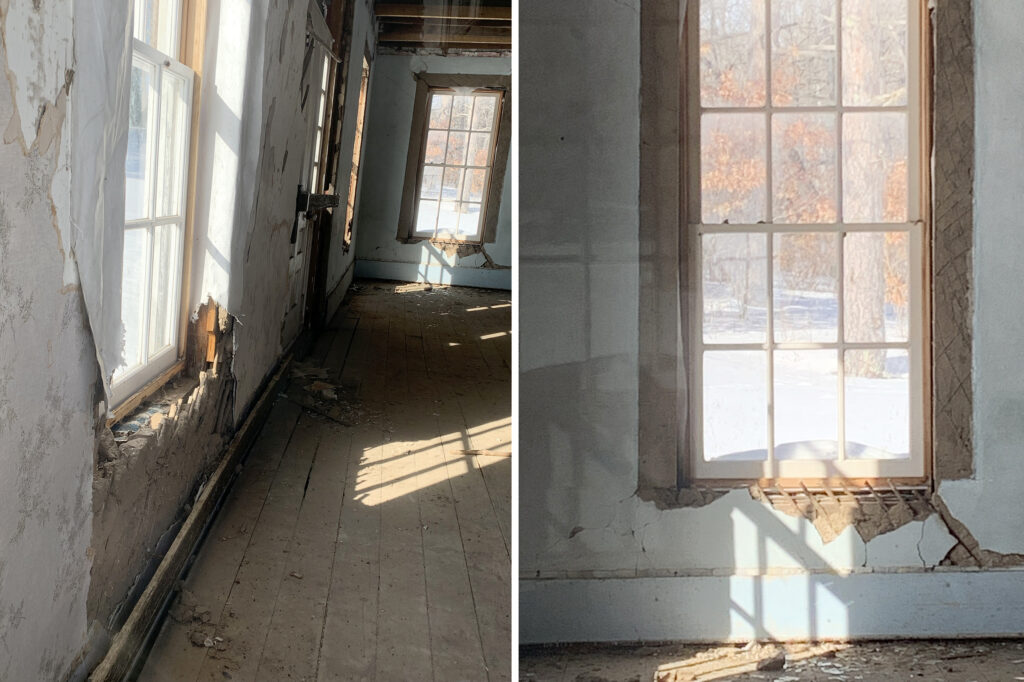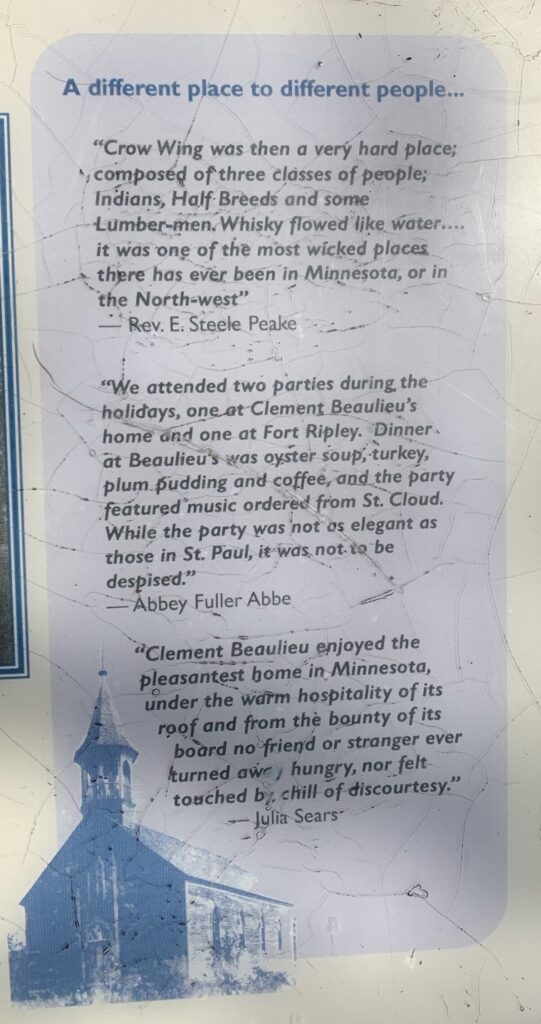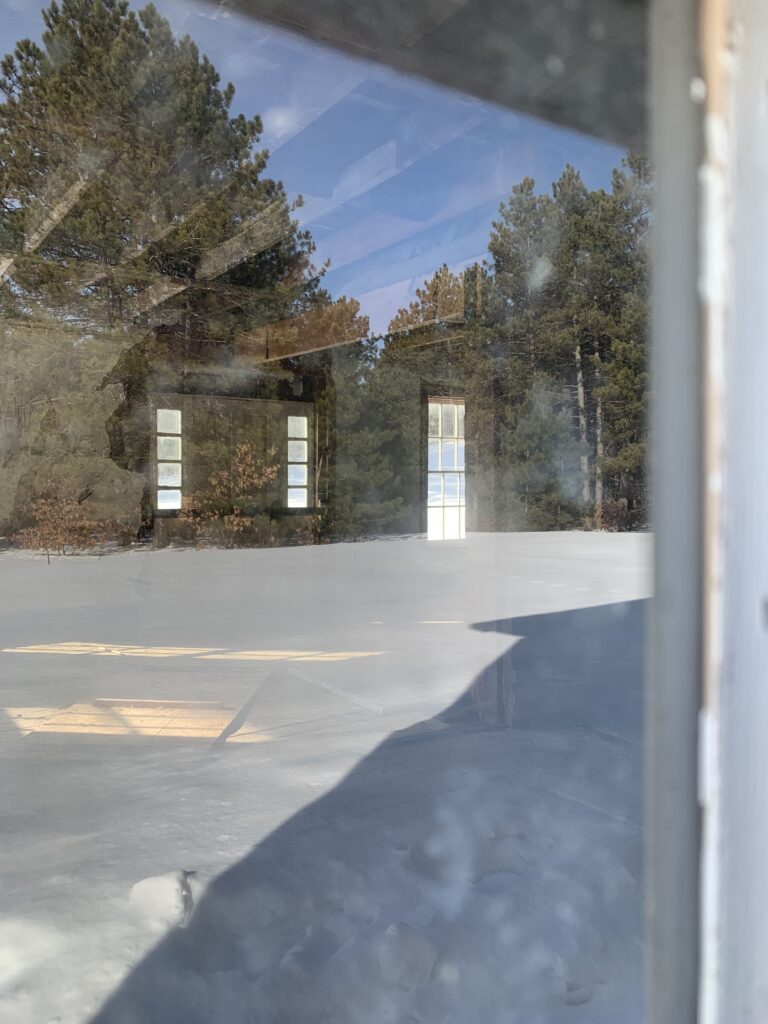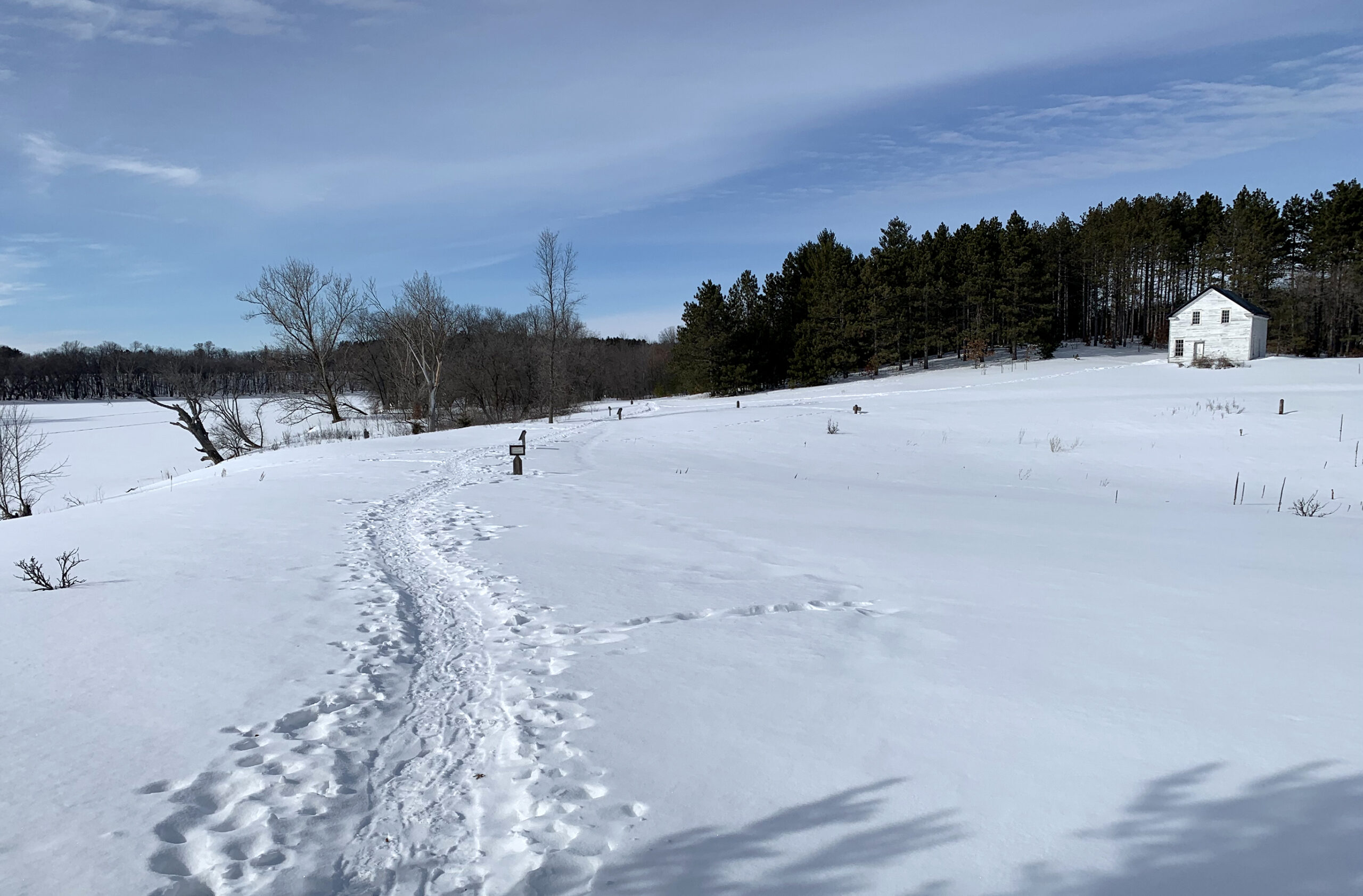March On: A People’s Journey through Time
The snow rose in piles over the edge of the hill before sloping down to the frozen Mississippi River. We snowshoed along a narrow path left from those who went before us this winter, stopping at the tall sign showing a depiction of the 1849 boardwalk that preceded today’s hike by 173 years. Pictured there, a dapper man dipped his hat to a lady in her long dress and bonnet. For a brief moment, our realities collided.
My ideas of their reality came from books I devoured on Sunday afternoons as a kid. Pioneers, covered wagons, the “Indian Wars” of the West, the Oregon Trail. Today, my snowshoes pad along the Red River Ox Cart trail, referred to in the 1850s as the Woods Trail, now part of Crow Wing State Park. History recorded a white trapper, James Gill, staying here in the winter of 1771. I’m grateful the signage makes mention of the Dakota and Ojibwe, previous inhabitants of these areas. The French fur trappers began to settle in with their native wives before more white settlers immigrated into the multicultural village site.

I lose myself in historical sites. I incorporate the photographs, diary excerpts, buildings, and actors clothed in the era working as guides, becoming part of their lifetimes. Today, the wind sends dried oak leaves scurrying down the frozen river, evident only because no trees are growing along the white serpentine stretch. On this spot, we have all shared the cold.


The snowshoe tracks pack over the park’s boardwalk leading to the Clement H. Beaulieu house, alone on the hill. It was a mansion in its day. Peeking in the windows, I see the undulating wood floor reaching between walls where the mud and stick construction is still visible. Other structures along the path are marked by snow filled divots, once inhabited by the hotel, homes, warehouse, and town well. A winter wind picks up over the ghost town, once home to some 600 souls, circa 1850.
We circle back toward the Catholic Church and cemetery, where their priest, Father Francis Xavier Pierz, is buried. A second cemetery stretches out over a river bluff by the present-day boat landing. Today, there are no birch bark nor Grumman canoes floating by. Today, there are no oxen bellowing their loads over the ruts cut into the earth. Today, like then, animal and human tracks follow the river, meander into the woods, and circumvent the Beaulieu house perched among the snow drifts.
I sensed the past winter survival mentality of those villagers – their perseverance, uncertainty, dreams of an easier, if not warmer, day. Currently, we are living that shared reality. The last two winters included the COVID pandemic, cloistering us into various stages of hibernation labeled quarantine. Grief has come to all of us in many forms – the death of loved ones, postponed plans, and dissolving dreams. It takes energy to wake up each morning and mentally adjust to an alien world. Yet, these folks who stoked the fires here 100 years ago faced the same.
I head home to put another log in my woodstove and a pot of stew on for lunch. Things haven’t changed so much. I like cozy, but am ready to stretch into springtime. I’m looking forward to the ice dam in my head to melt, allowing dreams to flood in again. Spring is coming.


In this photo, Jan catches the past and present, reflected through this window of the Beaulieu house at Crow Wing State Park. Note the ceiling rafters, sun spread on the floor through the windows, and the plaster walls.
From the outside, the reflections of sky, pines, snow, and the house’s long shadow overlay the interior.


And the basic needs remain the same: water,food ,clothing, shelter, and some form of connection/ kinship. We are what we are…